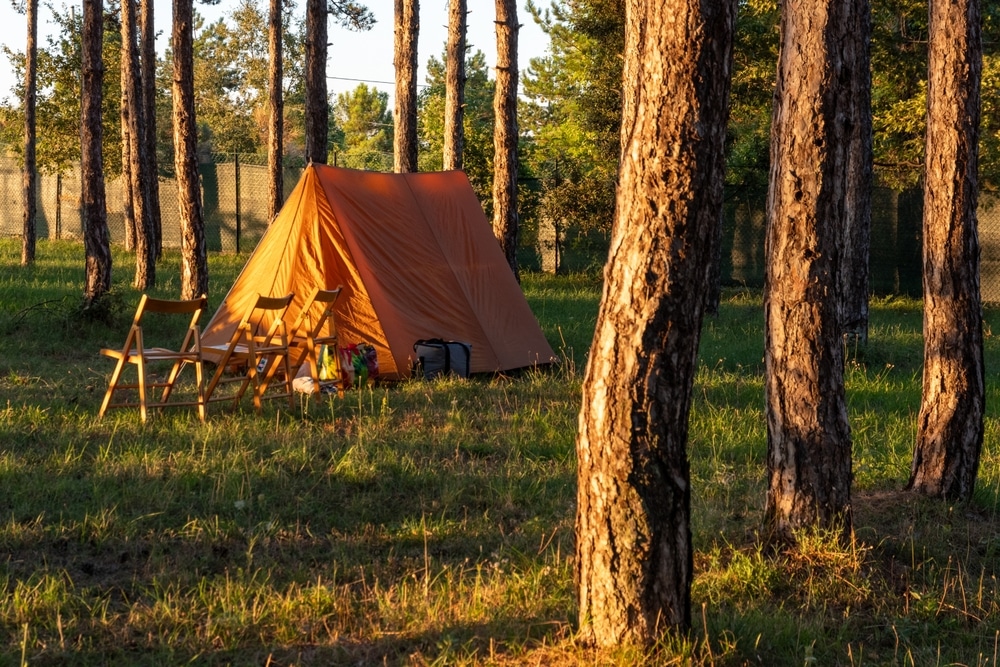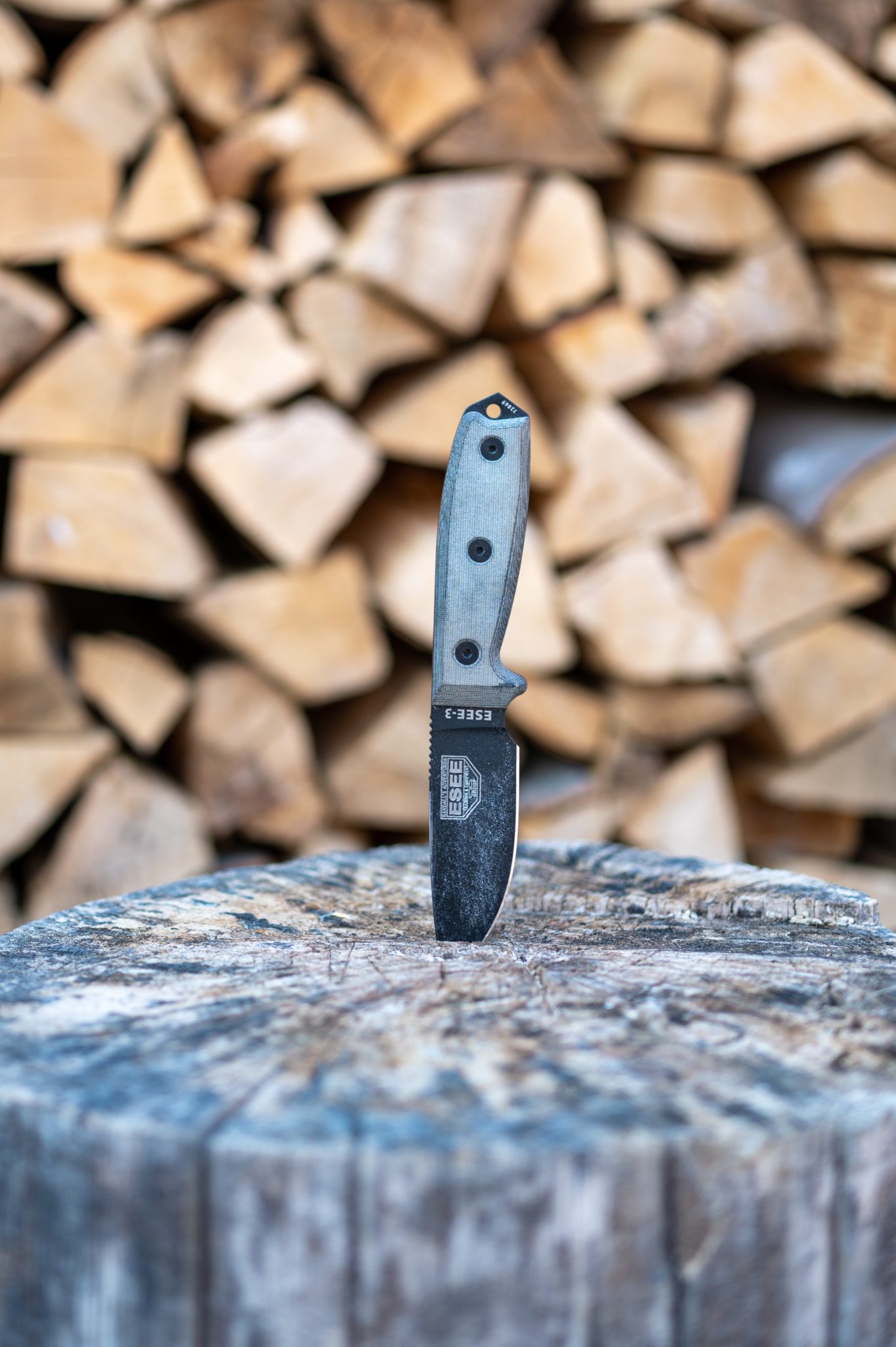Outdoor Blog
Hiking Safety Tips and Precautions

Hiking is an incredibly rewarding activity that allows you to explore the beauty of nature, get some exercise, and spend quality time with family and friends. However, it also comes with certain risks that should not be taken lightly. To ensure a safe and enjoyable hike for everyone involved, it’s important to take the necessary precautions.
In this article we will discuss essential safety tips and precautions for hikers so they can make sure their outdoor adventures are as safe as possible. We’ll cover topics such as researching your destination before heading out on the trail; packing essential items like a first-aid kit, map/GPS device, water bottle, snacks; letting someone know where you’re going and when you expect to return; dressing appropriately for weather conditions; staying aware of your surroundings at all times; being prepared in case of emergency situations; and more.
Research the area you plan to hike – know what type of terrain, wildlife, and weather conditions you may encounter
Before you head out on a hike, it’s important to be aware of the environment and terrain you’ll be tackling. Research the area thoroughly to find out what type of wildlife, plants, and other obstacles may cross your path. Also, check up on weather conditions such as temperature and rainfall so you know how best to dress for the hike and whether or not it’s safe to set out in the first place.
Pack essential items like a first-aid kit, map/GPS device, water bottle, snacks, sun protection gear (hat/sunglasses), etc.
In addition to researching your destination before heading out on the trail, make sure to pack essential items such as a first-aid kit, a map or GPS device (in case of getting lost), a water bottle and snacks (for hydration and energy), sun protection gear (hat/sunglasses) in case of sunny days. A whistle is also important for signaling for help if necessary. It’s also advisable to bring extra clothing layers for added warmth in case temperatures drop unexpectedly during your hike.
Let someone know where you’re going and when you expect to return
Before you set out on your hike, make sure someone knows where you’re going and when you expect to return. This way, if anything happens during the course of your hike, help can be sent quickly.
Dress appropriately for weather conditions
It’s important to dress appropriately for the weather conditions that you’ll encounter along your hike. Make sure to wear layers so you can adjust as needed and avoid being too hot or too cold. Wear sturdy shoes or boots to provide good support and traction on slippery terrain, and choose clothing that is breathable, lightweight and comfortable. Synthetic fabrics are preferable over cotton because they tend to dry faster in case of sudden downpours or sweat build-up from physical exertion.
Stay on established trails whenever possible and follow all posted signs or warnings
Stay alert to your environment and any changes that may occur. Pay attention to the terrain and watch out for any signs of danger, such as slippery rocks, loose gravel, unstable ground, etc. If you come across a potentially hazardous area, backtrack until you find a safe way around it. Don’t take risks that could put yourself in danger.
Avoid carrying large amounts of cash
Bring only enough money for food or emergencies. It’s not wise to carry large amounts of cash while hiking, since this can make you an easy target for thieves or predators. Bring only enough money for food or emergency situations. Also bring identification, such as a driver’s license or passport in case you need to identify yourself.
In case of medical emergency situations, know what to do
If something happens and you need medical assistance while out on the trail, it’s important to be prepared before heading out on your hike. Make sure to bring a first-aid kit and know how to use it. Also, be familiar with the area in case you need help locating emergency services or medical facilities nearby. It’s also a good idea to carry a GPS device so you can easily locate your exact position if needed.
If possible carry a cell phone with an emergency contact programmed in it
When hiking, it’s a good idea to carry a cell phone with you in case of an emergency. Make sure the battery is fully charged and an emergency contact (such as a family member or close friend) is programmed in the device. That way, if something happens, help can be sent quickly.
Avoid hiking alone; always have at least one other person with you who is familiar with the area
It’s important to never hike alone. Make sure there is always at least one other person with you that is familiar with the area and knows what to do in case of an emergency. This can greatly reduce the risk of something happening, as well as provide a sense of security if something does happen.
Bring food and water for energy and hydration
Make sure to bring enough food and water for your entire hike, plus extra in case of emergencies or unexpected delays. Dehydration is a common problem among hikers, so make sure to drink plenty of fluids throughout your hike in order to avoid it. High-energy snacks are also recommended so you’ll have enough fuel for the journey ahead.
Know basic navigation techniques before heading out into unfamiliar territory
If you’re heading out into unfamiliar territory, make sure to know basic navigation techniques such as map reading and compass use. This will help you find your way if something goes wrong or if there are no trails in the area. Knowing these skills can also help you avoid getting lost in the first place.
Finally, check the weather before going on a hike
It’s always a good idea to check the weather before going on a hike so that you can plan accordingly. Make sure to dress appropriately for the conditions and be aware of any potential storms or other hazards that could affect your hike. Knowing what to expect can help ensure that you have an enjoyable time on the trail. Hiking is an activity that many people enjoy, but it’s important to take safety precautions before heading out into the wilderness.
Conclusion
Hiking is an enjoyable and rewarding outdoor activity, but it is important to keep safety in mind. Make sure to dress appropriately for the weather, bring enough food and water, know basic navigation techniques and check the weather before heading out on your hike. Always have at least one other person with you who is familiar with the area, and avoid carrying large amounts of cash. If something happens while you’re out on the trail, make sure you know what to do in case of emergency situations. By following these safety tips and precautions, you can ensure that your next hiking adventure will be a safe and memorable one!
FAQs
What should I wear when out on a hike?
It’s important to dress appropriately for the weather and terrain. Wear comfortable, loose-fitting clothing that won’t restrict your movement and make sure to have appropriate footwear for the type of hiking you’re doing (e.g., boots or sneakers). Layering is also recommended so you can easily adjust your clothing if needed.
How much food and water should I bring?
You should bring enough food and water for the entire duration of your hike plus extra in case of emergencies or unexpected delays. High-energy snacks such as trail mix are recommended, as well as plenty of fluids to stay hydrated throughout the journey.
What should I do if I get lost or something happens while on a hike?
If you find yourself lost, stay calm and don’t panic. If you have a cell phone with you, make sure the battery is charged and an emergency contact (e.g., family member or close friend) is added in case help needs to be sent quickly; then try to ascertain your location and retrace your steps back toward safety. It’s also important to avoid carrying large amounts of cash out on a hike in case of emergencies.
Q: What should I do if I encounter a wild animal while on a hike?
If you encounter a wild animal, stay calm and slowly back away. Do not approach the animal or try to touch it; instead, give it plenty of space and slowly move away from the area. Also, avoid making loud noises or sudden movements that could startle the animal. If possible, carry pepper spray with you in case a situation arises where you must protect yourself.
Q: Are there any other safety tips I should be aware of before heading out on a hike?
Yes, there are several other safety tips to keep in mind when planning for a hiking trip. Make sure you tell someone where you’re going and when you plan to return; bring enough supplies for the entire duration of your hike; stay on established trails whenever possible; avoid traveling alone; and be aware of your surroundings at all times.
Outdoor Blog
Gear You Should Snag for the Great Outdoors This Season

Outdoor enthusiasts know that having the right gear can make all the difference. Whether you’re hiking, camping, hunting, or engaging in any other outdoor activity, quality equipment ensures not only safety but also a better overall experience. As we head into a new season, it’s time to refresh your gear collection with essential items that will enhance your adventures. In this article, we’ll explore five pieces of must-have outdoor gear, focusing on both practicality and comfort.
Shooting Glasses Are Essential for Outdoor Adventures
If you’re heading out for a shooting range session or a hunting trip, investing in a quality pair of shooting glasses is non-negotiable. Eye protection is critical when engaging in any activity involving firearms, and shooting glasses are designed to keep your eyes safe from potential hazards like debris, shell casings, and even harmful UV rays.
Shooting glasses are a key safety measure that helps shield your eyes from impact and glare. The lenses are typically made from high-impact resistant materials that can endure tough conditions, making them a must-have for hunters, target shooters, and outdoor enthusiasts alike. Beyond safety, these glasses often come with polarized lenses to improve visibility in various lighting conditions. By incorporating shooting glasses into your outdoor gear, you’re ensuring not only better safety but also improved performance during your time in the wilderness.
What Should You Look For During Black Friday Hunting Gear Deals?
One of the best times to stock up on essential outdoor gear is during Black Friday. Black Friday hunting gear deals provide an opportunity for hunters to snag high-quality items at significantly reduced prices. Whether you’re after apparel, backpacks, or specialized equipment, Black Friday sales often feature steep discounts on top brands that every outdoor enthusiast should take advantage of.
This sale season is ideal for upgrading your hunting wardrobe and stocking up on essential gear that may normally be out of your price range. From weather-resistant jackets to durable boots and base layers, hunting gear can be pricey, and Black Friday is the perfect time to invest in the best equipment. By keeping an eye out for deals during this shopping period, you can save money while ensuring you’re well-prepared for your next big adventure.
Multi-Tools Are a Must-Have
Want to know the most versatile pieces of gear you can carry? It is a multi-tool. Whether you’re camping, hiking, or hunting, having a tool that can serve multiple functions is a game-changer. Multi-tools come equipped with a variety of features such as knives, screwdrivers, pliers, and scissors, all compactly housed in a single device that easily fits in your pocket or pack.
The practicality of a multi-tool is hard to beat. It allows you to tackle unexpected tasks, from cutting rope to repairing gear, all without needing to carry a full toolbox. When you’re out in the wild, you want to be prepared for anything, and a multi-tool ensures you’re ready to handle small emergencies or make quick fixes with ease.
Insulated Water Bottles Can Improve Your Outdoor Experience
Staying hydrated is one of the most important aspects of any outdoor activity. Whether you’re embarking on a long hike or spending hours in a hunting blind, having an insulated water bottle can make a difference. Insulated bottles have features that help to keep your drinks at the desired temperature for a long time, which is especially useful during extreme weather conditions.
These bottles maintain the temperature of your beverage—whether cold or hot—so you can enjoy refreshing water in the summer or a warm drink during chilly morning hunts. Insulated water bottles are also typically made from durable materials, meaning they can withstand the rigors of outdoor use without breaking or leaking. Investing in a high-quality insulated bottle ensures that you stay hydrated and comfortable throughout your outdoor excursions.

Durable Backpacks Can Enhance Your Outdoor Experience
A good backpack is the cornerstone of any successful outdoor trip. When you’re out in nature, you need a reliable, durable pack to carry all of your gear comfortably. Look for backpacks that are built to withstand harsh conditions, provide ample storage, and have ergonomic designs that distribute weight evenly to prevent strain on your back and shoulders.
Modern outdoor backpacks come equipped with multiple compartments to help you stay organized, as well as specialized features like hydration bladder compatibility, rain covers, and reinforced straps. By investing in a durable, well-designed backpack, you’ll have the capacity to carry everything you need—whether it’s extra clothing, food, or hunting gear—while maintaining comfort during long treks.
Outdoor Blog
Are You Ready for Autumn Adventures? How to Prep for an Unforgettable Outdoor Fall Guys Trip

As autumn rolls in, the great outdoors beckons with its crisp air and colorful foliage. For those gearing up for an adventurous Fall Guys trip—think hiking, camping, and maybe some deer hunting—the preparation is half the fun and all the necessity. With a myriad of activities to choose from, how do you ensure your fall excursion is not only exhilarating but also safe and comfortable? Here’s a step-by-step guide to making the most of your outdoor escapades this fall.
Choosing Your Adventure
First things first: deciding what type of fall outdoor activity tickles your fancy. Are you looking to conquer trails with breathtaking autumn views, or are you gearing up for a weekend of tranquil camping beside a glistening lake? Perhaps, the thrill of tracking and observing wildlife is what you’re after.
Each activity demands a different approach and preparation method. Start by defining what your fall guys trip looks like. Is it a quiet escape into the wilderness, a challenging hike, or a dedicated hunting expedition? Once you’ve nailed down the type of trip, you can start tailoring your prep list to match the demands of the activities you’ve chosen.
Plan a Camping Trip
If camping is on your agenda, meticulous planning is essential to enjoy both the spontaneity and serenity of nature without a hitch. When you plan a camping trip, think beyond just a tent and a sleeping bag. Consider the overall length of your trip, the climate of your chosen destination, and the size of your group. Are you venturing into bear country? If so, bear-proof containers for your food and trash are a must.
What’s the weather forecast? Ensure your gear is appropriate for colder nights and unpredictable weather patterns. A well-planned camping experience means securing the right campsite, bringing sufficient food and water supplies, and ensuring you have the necessary permits. Also, be aware of the leave-no-trace principles to keep your environmental impact to a minimum. Planning with precision ensures you’re free to relax and revel in the beauty of the season without unnecessary interruptions.

Gear Up for Deer Hunting
For many outdoor enthusiasts, fall is synonymous with deer hunting season. If this is the core of your guys trip, gearing up appropriately cannot be overstressed. Your deer hunting gear is your ticket to not only success but also safety. Start with the basics: a reliable hunting rifle or bow, suitable ammunition, and a quality scope or binoculars for spotting your target.
Clothing is next on the list; opt for layers that can easily adjust to changing temperatures and are also camouflaged to blend in with the fall environment. Don’t skimp on a good pair of boots—comfort, warmth, and durability are key when you’re on the move. Also, essential gear like a hunting license, deer tags, a first-aid kit, and even a GPS or compass should be non-negotiable items in your pack. Remember, the right gear not only enhances your chances of a fruitful hunt but ensures you can do so safely and responsibly within the ecological balance.
Map Your Route
Mapping your route is crucial whether you’re hiking, camping, or hunting. This involves more than just selecting a trail or a campsite; it means understanding the terrain, noting water sources, identifying potential shelter spots, and being aware of exit points in case of emergencies. Topographic maps, GPS devices, and even mobile apps can be incredibly useful tools for this.
Spend time familiarizing yourself with the area through these resources, and always carry a physical map and compass—you never know when technology might let you down. It’s also a good idea to inform someone about where you plan to go and expected return time is a safety must. Properly mapping your route not only helps in avoiding getting lost but also maximizes your interaction with nature, letting you find those hidden spots that make a trip memorable.

Prepare Physically and Mentally
The physical demands of outdoor activities, especially in the unpredictable weather of fall, should not be underestimated. Start conditioning your body weeks in advance, particularly if your trip involves strenuous activities like long hikes or hunting. Cardiovascular exercises, strength training, and hikes with a loaded backpack can prepare your body for the exertion to come.
Equally important is mental preparation. Familiarize yourself with survival skills, such as how to start a fire, basic first aid, and how to stay calm in unexpected situations. A physically and mentally prepared adventurer is more likely to enjoy the trip and handle potential challenges effectively.
Pack Smart
The final step in preparing for your outdoor trip this fall is packing. Since fall weather can be highly variable, layering is key. Include a moisture-wicking base layer, an insulating middle layer, and a waterproof outer layer. Besides clothing, pack essential gear tailored to your activities—this could include a sleeping bag rated for colder temperatures, waterproof bags to keep gear dry, cooking equipment, food supplies, and safety items like a whistle, flashlight, and multi-tool. Be mindful of the weight and volume of your pack; every item should justify its place in your backpack by being essential or serving multiple purposes.
Outdoor Blog
BougeRV Showcases Sustainable Innovations at Outdoor Retailer Summer Market 2024
BougeRV is thrilled to participate in the Outdoor Retailer Summer Market 2024, scheduled from June 17-19 at the Salt Palace Convention Center in Salt Lake City, Utah. As North America’s premier outdoor industry trade show, the event is a convergence of top brands, retailers, and industry professionals showcasing the latest in outdoor gear and innovations. BougeRV’s participation is a perfect example of their commitment to sustainability and eco-friendly outdoor living solutions.

At the head of BougeRV’s exhibit is the Rocky Portable Fridge, a robust and versatile cooling solution designed to meet the demands of outdoor enthusiasts. This innovative fridge features dual-zone capability, allowing it to function simultaneously as a refrigerator and a freezer. Built with heavy-duty materials, the Rocky Portable Fridge is designed to withstand the rigors of outdoor use, including shockproof capabilities up to 40°. The fridge’s efficient energy consumption, coupled with a battery protection system, makes it perfect for off-grid adventures, aligning perfectly with the sustainable ethos of the Outdoor Retailer Summer Market.
The Rocky Portable Fridge also shows off an impressive temperature range from -4°F to 68°F, allowing for precise temperature control. Its smart storage solutions, including a removable divider and basket, ensure that items remain organized and easily accessible. The fridge can be powered by a 12V/24V DC car port, a 100-240V AC wall outlet, or an optional portable power station, providing unparalleled versatility. This adaptability is crucial for modern adventurers who require reliable and efficient cooling solutions on the go.

In addition to the Rocky Portable Fridge, BougeRV is showing several other cutting-edge products designed to enhance outdoor experiences. The CRPRO 30, a compact and high-performance fridge, is perfect for campers and RV enthusiasts. Its advanced cooling technology and robust build make it a reliable companion for any journey. Similarly, the 4000BTU Portable Air Conditioner is tailored for overlanding and camping, offering powerful cooling with user-friendly features such as dual adjustable air outlets and an IPX4 water-resistant design. These products are expected to attract overlanding enthusiasts eager to explore the latest innovations in outdoor living.
BougeRV’s participation in the Outdoor Retailer Summer Market is really and truly about connecting with other industry leaders, exploring emerging trends, and demonstrating their commitment to sustainable and eco-friendly practices. By attending this prestigious and engaging event, BougeRV aims to highlight their dedication to providing high-quality products that cater to the needs of modern outdoor enthusiasts.
For more details about BougeRV and their innovative products, visit the BougeRV website. BougeRV’s involvement in the Outdoor Retailer Summer Market 2024 highlights their dedication to sustainability, innovation, and customer satisfaction, positioning them as a leading brand in the outdoor industry ready to make a significant impact at this breakout event.
-

 Outdoor Blog6 years ago
Outdoor Blog6 years agoCamping Cots and Air Mattresses: What’s Best for You?
-

 Guns & Shooting Gear Reviews3 years ago
Guns & Shooting Gear Reviews3 years agoBest Gun Brands – Top 10 Gun Manufacturers in the World
-

 Best in Class Reviews3 years ago
Best in Class Reviews3 years agoThe 7 Best Camping Dinnerware Items
-

 Outdoor Blog5 years ago
Outdoor Blog5 years ago5 Useful Items To Have When You’re Out On Your Hunting Trip
-

 Best in Class Reviews3 years ago
Best in Class Reviews3 years ago7 Great Sleeping Bags for Tall People – 2023 Review
-

 Best in Class Reviews5 years ago
Best in Class Reviews5 years agoThe 7 Best Fixed-Blade Survival Knives – Tested & Reviewed
-

 Backpacking Gear Reviews & Guides4 years ago
Backpacking Gear Reviews & Guides4 years ago7 Best Solar Panel Trail Cameras – Reviewed
-

 Best in Class Reviews3 years ago
Best in Class Reviews3 years ago10 Best Gazebos for Camping













